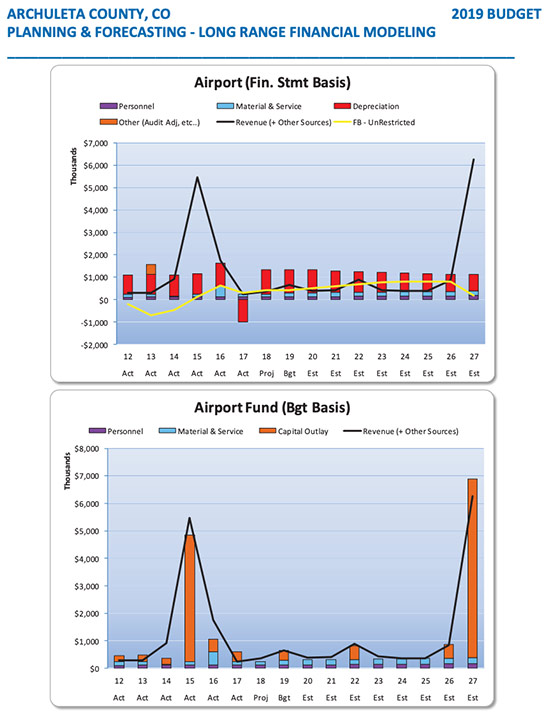For Pagosa Springs, aviation is the sound of growth.
— The first sentence in the 2012 Economic Impact Study published by the Archuleta County Airport Advisory Commission
We’re going to be talking, in this editorial series, about evidence… and economic impact studies.
And about ‘data’…
And about other ways of thinking that we know something.
The other day, I ran across an article in the New Yorker magazine, by Harvard professor and New Yorker staff writer Jill Lepore, discussing the various ways that humans collect information about the world, and how we form our beliefs about “truth”. In this particular article. Dr. Lepore was writing about “Data” — among other ways of understanding (or misunderstand) the world — and she used a definition of “data” that I wasn’t familiar with.
In Dr. Lepore’s article, “Data” means number sets that are too vast, or too complicated, to process without the use of a computer.
Another way of understanding the world, in Dr. Lepore’s view, is “Numbers”. That is, statistics that can be generated without the need for a computer. Dr. Lepore notes that the word “statistics” is etymologically related to the word “state”. As in “government’. Historically, she says, the use of statistics is closely related to the rise of the administrative state.
In the article, Dr. Lepore also talks about other ways of ‘knowing what is true’. Other ways that we humans collect ‘evidence’.
The image at the top of this page was taken from the cover of the ‘Executive Summary’ of the Economic Impact Study (EIS) performed in 2012 by the Archuleta County Airport Advisory Commission. The presumed purpose of their 2012 study was to help justify millions of dollars of improvements to the Archuleta County airport known as Stevens Field. You can download the 2012 study here (large file).
In Part One yesterday, I noted that all five of the airplanes shown on the cover of this publication are private jets.
I would propose, dear reader, that this is a true statement.
“All five of the airplanes shown in these photographs are private jets.”
Is that important information… that all of the photos on the cover of an Archuleta County EIS were of private jets? For example, did it illustrate important airport functions, from the perspective of the Airport Advisory Commission responsible for the 2012 EIS? Or did all the photos just accidentally happen to show private jets?
That is to say, did this photograph qualify as ‘evidence’ of someone’s intentions?
On July 5, the Archuleta Board of County Commissioners accepted a proposal from their Airport Advisory Commission to produce another Economic Impact Study, possibly to be completed by next summer. You can download that proposal here.
As I also mentioned in Part One, the timing of this new EIS might be — might be — related to plans to spend perhaps $8 million on upgrades and maintenance at Stevens Field between now and 2027, as shown in the following graph found in the 2019 Archuleta County Budget:
I would propose that the graphs above are a form of evidence. They illustrate, in a graphic form, something that happened prior to 2019, and something that is planned for 2026 and 2027.
A few thoughts about ‘evidence’.
In the year 1215, Pope Innocent III prohibited the participation of Catholic priests in “Trials By Ordeal”. Previous to 1215, the accepted test of someone’s guilt was to drown them or burn them, and see it they survived… in which case they were innocent.
The rationale for “Trial By Ordeal” was that there are certain things known only to God — including, in most cases, a person’s guilt or innocence — and of course God, knowing a person’s innocence, would allow them to survive the ordeal.
Pope Innocent proclaimed that Christians could no longer determine a person’s guilt or innocence by subjecting that person to an ordeal.
In England, “Trial By Ordeal” was replaced by a new system: Trial by a Jury of One’s Peers. Instead of relying on God to determine a person’s guilt or innocence, twelve ordinary people, with no special expertise (and presumably, without access to divine knowledge) were expected to establish a verdict, based on “facts”.
A “fact” being, simply, something that was witnessed, or that could be established by material evidence. This was a revolutionary change in how Europeans were expected to understand the world… a new understanding that mysteries, such as a person’s guilt or innocence, could be solved without God’s help.
The process of determining what was a “fact” and what was not a “fact” was, here, a collaborative process. The entire jury of twelve had to have a conversation, and come to some kind of agreement. A “fact” was not a thing that existed in reality, but was something created by a social agreement. The mystery — the thing had could not be “known” for certain — was resolved by ordinary people sitting on a jury, and sharing their ideas.
Ultimately, this same idea — that a group of people could collectively resolve a mystery, by coming to a consensus — animated the Scientific Revolution of the 1500s and 1600s. The mystery of why the Sun rises, why the Wind blows, why Sickness appears, why Bees make honey… all of these mysteries began to find a social agreement among the people who were engaged in what was then called “Natural History” and is now called “Science”.
The next step in building a world based on “facts” took place in the 1700s, when new theories about government were being developed. The intellectuals of the day were debating, in particular, theories about whether ‘democratic’ forms of government were superior to ‘autocratic’ forms of government.
Was it even possible that the ordinary man on the street could understand the world fully enough to make intelligent decisions about his own government? It was understood, at the time, that only certain men — and certainly not women — would be allowed to participate in the decision-making processes.
Of course, many very intelligent people were arguing that ‘democracy’ could never work. Ordinary citizens could not possibly be relied upon to successfully form a government “of the people, by the people, and for the people.”
Nevertheless, ‘democratic’ governments were formed, and somehow managed to survive the Trial By Ordeal.
One of the curious aspects of that survival was transparency. Theories about democracy generally asserted that public access to government decision-making, and access to ideas in general, must be universally available. In order for democracy to survive, we needed freedom of speech, freedom of the press, a transparent legal system, transparent government, freedom of worship, and a system of free public education.
But in 2023, a lot of people can’t agree on the “facts”.


